Introduction
Anaphylaxis is a rapid-onset allergic reaction that can be life-threatening, requiring immediate medical intervention. This condition is characterized by a severe response to allergens, which can include foods, medications, insect stings, or latex, among others. The immune system releases a flood of chemicals that can cause shock; a sudden drop in blood pressure and narrowing of the airways can lead to blocked breathing.
Understanding Anaphylaxis: Anaphylaxis is not a condition to take lightly. It can escalate quickly, causing a cascade of symptoms that can be overwhelming for the individual experiencing them. The reaction can begin within seconds or minutes of exposure to an allergen, though sometimes it may take hours to manifest. The severity of anaphylaxis can vary from one person to another, but it always requires prompt medical attention.
Symptoms of Anaphylaxis
Anaphylaxis is an acute, life-threatening allergic reaction that strikes fast and can worsen quickly. It’s a medical emergency that demands immediate attention and intervention. The symptoms of anaphylaxis are varied and can affect multiple body systems, making it crucial to recognize them early and act swiftly.
Difficulty Breathing: One of the most alarming symptoms of anaphylaxis is difficulty breathing. This occurs when the airways constrict due to swelling, known as angioedema, which can rapidly lead to respiratory distress. Individuals may experience wheezing, a tight chest, or a feeling of a lump in the throat, signaling the need for urgent medical help.
Swelling of the Face or Throat: Swelling, particularly around the face and throat, is a hallmark sign of anaphylaxis. This can manifest as puffiness around the eyes, lips, and tongue, and can progress to obstruct the airway, making it difficult to breathe or swallow.
Hives: Hives, or urticaria, are raised, itchy welts that appear on the skin. They are often one of the first signs of an allergic reaction and can spread rapidly across the body. The presence of hives, especially when accompanied by other symptoms, is a clear indicator of anaphylaxis.
Rapid Heartbeat: A rapid heartbeat, or tachycardia, is the body’s response to the allergic reaction and the subsequent release of adrenaline. It can be felt as a pounding or racing heart and is a sign that the cardiovascular system is being affected.
Drop in Blood Pressure: Anaphylaxis can cause a sudden drop in blood pressure, known as shock. This can lead to dizziness, lightheadedness, or fainting, and is a sign that the body’s organs are not receiving enough blood and oxygen.
Recognizing these symptoms is critical. If you suspect anaphylaxis, administer an epinephrine auto-injector immediately, if available, and call for emergency medical assistance. Do not wait to see if symptoms improve; anaphylaxis can escalate rapidly, and every second counts.
Causes of Anaphylaxis
Anaphylaxis is a severe allergic reaction that can be life-threatening, and it’s essential to understand its causes to prevent and manage potential episodes effectively. The condition is typically triggered by allergens, which are substances that the immune system mistakenly identifies as harmful. This overreaction can lead to anaphylaxis, which requires immediate medical attention.
Causes: The most common triggers of anaphylaxis include:
- Foods: Certain foods are notorious for causing allergic reactions. Peanuts, tree nuts, shellfish, fish, milk, eggs, soy, and wheat are among the most common food allergens.
- Insect Stings: Stings from bees, wasps, hornets, yellow jackets, and fire ants can trigger anaphylactic reactions in susceptible individuals.
- Medications: Some medications, including antibiotics like penicillin, nonsteroidal anti-inflammatory drugs (NSAIDs), and aspirin, can cause anaphylaxis in sensitive people.
- Latex: Natural rubber latex found in medical gloves, balloons, and certain medical devices can trigger a reaction in those with a latex allergy.
Understanding individual triggers is crucial for preventing anaphylaxis. People with known allergies should avoid exposure to their allergens and carry an epinephrine auto-injector at all times.
Diagnosis of Anaphylaxis
Diagnosing anaphylaxis involves several steps:
- Medical History: A detailed medical history helps identify previous allergic reactions and potential triggers.
- Physical Examination: A physical exam can reveal signs of an allergic reaction, such as hives or swelling.
- Allergy Testing: Skin prick tests or blood tests can confirm specific allergies.
- Blood Tests: Blood tests may measure levels of tryptase, an enzyme released during an allergic reaction, which can support an anaphylaxis diagnosis.
Prompt diagnosis and identification of allergens are vital for managing anaphylaxis. Healthcare providers can develop a personalized action plan for patients to follow in case of exposure to their allergens.
In summary, anaphylaxis is a serious condition triggered by various allergens, including certain foods, insect stings, medications, and latex. Recognizing these triggers and understanding how to diagnose anaphylaxis are key steps in preventing and managing this life-threatening reaction. Individuals at risk should always be prepared with an action plan and the necessary medication to treat anaphylaxis should it occur. Consulting with healthcare professionals is essential for anyone with a history of allergic reactions to ensure they receive the best possible care and guidance.
Best Treatment for Anaphylaxis
Immediate Actions During an Anaphylactic Reaction: The onset of anaphylaxis demands swift action. Recognizing the symptoms early, which can include difficulty breathing, swelling, hives, and low blood pressure, is crucial. The first step is to call emergency services, as time is of the essence. While waiting for medical help, the person should be laid flat on their back, with their legs elevated to prevent shock, and any tight clothing should be loosened to aid breathing.
Administration of Epinephrine (Adrenaline): Epinephrine is the primary treatment for anaphylaxis and should be administered as soon as possible. It works by reversing the symptoms, constricting blood vessels, and opening airways in the lungs. An epinephrine auto-injector, commonly known as an EpiPen, should be used immediately if available. It’s essential to inject it into the outer thigh muscle and hold it in place for several seconds to ensure the full dose is delivered.
Role of Antihistamines and Corticosteroids: While epinephrine is the first line of defense, antihistamines and corticosteroids are adjunct treatments. Antihistamines can help alleviate hives and itching, but they are not a substitute for epinephrine. Corticosteroids can prevent a delayed phase of the anaphylactic reaction and improve long-term outcomes. However, they should not delay the administration of epinephrine.
Prevention of Anaphylaxis
Follow-Up Care and Prevention of Future Reactions: After an anaphylactic episode, follow-up care is vital. Patients should be observed in a medical facility for any late-phase reactions. A referral to an allergist or immunologist for further evaluation and prevention strategies is also recommended. Patients should be educated on avoiding triggers and the importance of carrying an epinephrine auto-injector at all times.
Prevention of Anaphylaxis: Preventing anaphylaxis starts with the avoidance of known allergens. This may involve reading food labels carefully, inquiring about ingredients when eating out, and avoiding areas where airborne allergens are present. For those with food allergies, implementing strategies such as maintaining a food diary and wearing allergy alert bracelets can be beneficial.
Importance of Carrying an Epinephrine Auto-Injector: Individuals at risk of anaphylaxis should always carry an Epinephrine auto-injector. Quick access to epinephrine can be life-saving, and having a backup injector is also advised. It’s important to check the expiration date regularly and replace the injector before it expires.
Educating Family, Friends, and Caregivers: Education plays a critical role in the management of anaphylaxis. Family, friends, and caregivers should be trained on recognizing the signs of anaphylaxis, administering epinephrine, and understanding the emergency action plan. Schools and workplaces should also be informed of an individual’s allergies and the steps to take in case of an emergency.
The best treatment for anaphylaxis involves immediate action, the prompt administration of epinephrine, and the supportive use of antihistamines and corticosteroids. Prevention hinges on avoiding triggers, carrying an epinephrine auto-injector, and educating those around the at-risk individual. By adhering to these guidelines, individuals with severe allergies can manage their condition and reduce the risk of a life-threatening reaction. Remember, anaphylaxis is a medical emergency, and understanding how to respond can save lives.
Anaphylaxis in Children
Unique Considerations for Children: Children are not just small adults; they have unique physiological and psychological needs that must be considered during an anaphylactic emergency. Their airways are smaller, so swelling can lead to quicker respiratory failure. Additionally, children may have difficulty articulating their symptoms, which can delay recognition and treatment. It’s imperative that parents, teachers, and caregivers are adept at recognizing the early signs of anaphylaxis in children, such as skin reactions, vomiting, or a sudden cough.
Common Triggers in Pediatric Cases: The most common triggers of anaphylaxis in children are food allergens. Peanuts, tree nuts, milk, eggs, wheat, and soy account for the majority of severe allergic reactions in young ones. Insect stings, medications, and latex are other notable triggers. Understanding these common triggers is essential for prevention and preparedness.
Importance of Communication with Schools and Caregivers: Effective communication with schools and caregivers is paramount. Emergency action plans should be in place, detailing the steps to take if anaphylaxis occurs. Schools should have protocols for food allergy management, including allergen-free zones and staff trained in administering epinephrine. Caregivers must be informed about the child’s allergies, the location of the epinephrine auto-injector, and how to use it.
Anaphylaxis and Allergies
Relationship Between Anaphylaxis and Allergies: Anaphylaxis is the most severe form of an allergic reaction. It’s an overreaction of the body’s immune system to an allergen, which can be food, medication, or an insect sting. While allergies can manifest with mild symptoms like a runny nose or rash, anaphylaxis involves multiple body systems and can be fatal without prompt treatment.
Understanding the Difference Between Mild Allergic Reactions and Anaphylaxis: Mild allergic reactions are common and often localized, such as hives at the site of an insect bite. Anaphylaxis, however, is a systemic reaction. It can cause a sudden drop in blood pressure, severe breathing difficulties, and loss of consciousness. The key difference is the severity and the rapid onset of symptoms, which requires immediate administration of epinephrine.
Anaphylaxis in children requires special consideration due to their unique vulnerabilities. Awareness of common triggers and robust communication with those responsible for their care can significantly reduce risks. Understanding the stark difference between mild allergic reactions and anaphylaxis is crucial for everyone, as timely intervention can mean the difference between life and death. This article aims to educate and empower parents, educators, and caregivers with knowledge to protect our most vulnerable population—children. Always consult healthcare professionals for personalized advice and treatment plans, and remember, preparedness is the key to safety.
Anaphylaxis and Asthma
Connection Between Anaphylaxis and Asthma: Asthma is a chronic respiratory condition characterized by inflammation and narrowing of the airways, leading to wheezing, shortness of breath, and coughing. Anaphylaxis, on the other hand, is an acute allergic reaction that can affect multiple body systems, including the respiratory system. Individuals with asthma are at a higher risk of experiencing severe anaphylactic reactions, primarily because their already sensitive airways can react more intensely to allergens. The inflammation caused by asthma can exacerbate the respiratory symptoms of anaphylaxis, such as difficulty breathing and wheezing, making the reaction more dangerous.
Managing Asthma in Individuals at Risk of Anaphylaxis: For those with asthma who are also at risk of anaphylaxis, managing their asthma effectively is crucial. This includes regular use of prescribed asthma medications, such as inhaled corticosteroids, to maintain control over their asthma symptoms. Additionally, it’s essential to have a personalized asthma action plan in place, developed in consultation with a healthcare provider. This plan should outline the steps to take during an asthma attack and how to adjust medications during an anaphylactic reaction. Avoiding known allergens and having quick access to an epinephrine auto-injector can also help manage the risks associated with both conditions.
Conclusion
Recap of Key Points Discussed: Throughout this article, we’ve discussed the immediate actions to take during an anaphylactic reaction, the administration of epinephrine, and the roles of antihistamines and corticosteroids. We’ve also covered follow-up care, prevention strategies, and the unique considerations for children with anaphylaxis. The connection between anaphylaxis and asthma and the importance of managing asthma in individuals at risk of anaphylaxis were highlighted.
Importance of Seeking Medical Attention for Anaphylaxis: Anaphylaxis is a medical emergency that requires prompt treatment. Seeking immediate medical attention is vital, even after administering epinephrine, as symptoms may recur or worsen. Professional medical care ensures proper treatment and monitoring for complications.
Encouragement to Raise Awareness and Promote Preparedness for Anaphylactic Reactions: Raising awareness about anaphylaxis and asthma is essential. Educating the public, including patients, families, schools, and workplaces, can lead to better preparedness and response during an emergency. Sharing information about the signs and symptoms of anaphylaxis, how to administer epinephrine, and the importance of emergency action plans can save lives.
FAQ
01. What is the diagnosis of anaphylaxis?
- Doctors typically diagnose anaphylaxis based on a combination of clinical symptoms and the patient’s history of allergic reactions.
- Skin allergy tests or blood tests can help identify the specific allergen that triggered the reaction.
- Serum tryptase levels may be measured within a few hours after anaphylaxis to confirm the diagnosis.
02. What is the best treatment for anaphylactic reaction?
- Epinephrine (adrenaline) is the primary treatment for anaphylaxis. It helps reduce the allergic response and should be administered promptly.
- Other medications, such as intravenous antihistamines and cortisone, may also be given to relieve symptoms and improve breathing.
- An autoinjector containing epinephrine is essential for self-administration during an emergency.
04. What is anaphylaxis prevention?
- Avoidance is crucial. Identify and stay away from substances that trigger anaphylaxis.
- Wear a medical alert bracelet or necklace to indicate your food allergies.
- Carry an autoinjector of epinephrine at all times.
- Read food labels carefully to prevent accidental exposure to allergens.
05. What is the cause of anaphylaxis?
- Foods: Peanuts, tree nuts, fish, shellfish, milk, eggs, soy, and wheat.
- Medications: Antibiotics (especially penicillin group and sulfa-containing drugs).
- Insect stings: Bees, wasps, and other insects.
- Latex exposure.
- Exercise-induced anaphylaxis (rarely triggered by aerobic exercises).
06. What are 5 common symptoms of anaphylaxis?
- Skin reactions (itching, hives, flushed or pale skin).
- Lower blood pressure.
- Difficulty breathing.
- Choking sensation.
- Weak and rapid pulse.
- Nausea, vomiting, and dizziness.
07. What foods cause anaphylaxis?
- Peanuts.
- Tree nuts (e.g., walnuts, hazelnuts, cashews).
- Fish and shellfish.
- Milk, eggs, soy, and wheat.
08. Can anaphylaxis be cured?
- Unfortunately, there is no cure for anaphylaxis.
- However, with proper management, including avoidance and carrying an epinephrine autoinjector, individuals can prevent severe reactions and lead a safe life.
*Image credits- freepik*
Important Notice:
The information provided on “health life ai” is intended for informational purposes only. While we have made efforts to ensure the accuracy and authenticity of the information presented, we cannot guarantee its absolute correctness or completeness. Before applying any of the strategies or tips, please consult a professional medical adviser.
















1 comment
Hi i think that i saw you visited my web site thus i came to Return the favore I am attempting to find things to improve my web siteI suppose its ok to use some of your ideas